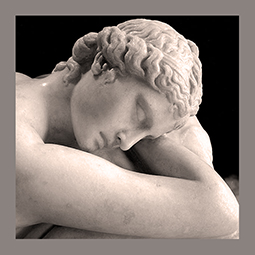Author: M. Cassia
Download article as .pdf: Tra dismorfosi e dissenso: Favorino di Arelate alla corte di Adriano
 The substantial “silence” of Soranus of Ephesus, a famous gynaecologist active in the Trajan-Hadrian period, on the birth of “monstrous” foetuses raises some inescapable questions. According to some scholars, physicians generally did not deal with the subject because they were unable to find concrete cures for these peculiar pathologies, while according to others, the practitioners’ silence was due to the fact that the births of “monstrous” foetuses were only of relevance from a paradoxical and/or mythological point of view, but had no scientific relevance. Now, as much as these motivations may at first glance appear agreeable, both the many references to cases of hermaphroditism, sex change, and male motherhood in the De mirabilibus of Phlegon of Tralles, a freedman of the emperor Hadrian and a contemporary of Soranus, and the “burning” affair of Favorinus of Arelate, a famous rhetorician with an undefined sex and a “fringe” intellectual in the Hadrian age, as well as the sources of law concerning the prevailing sex of the hermaphrodite, his ability to act as a witness in a will and to establish posthumous heirs, must, however, lead us to reflect on the existence of “other” – social, political and juridical – conditioning, which may have influenced Soranus’ “silence” on such a delicate subject as teratology, to which instead Galen of Pergamum – an illustrious physician, much younger than his colleague from Ephesus – reserved even minimal attention, pointing out how the “so-called” hermaphrodites would have aroused the interest of sculptors rather than doctors, in not coincidental chronological concomitance with the types of the “Sleeping Hermaphrodite” and the “Standing Hermaphrodite”, well known through the famous copies conserved in Paris (Louvre, from the Villa Borghese), Rome (Villa Borghese, Museo delle Terme), St. Petersburg (Hermitage, from Hadrian’s Villa in Tivoli), London (British Museum), Florence (Museo degli Uffizi), Berlin (Altes Museum).
The substantial “silence” of Soranus of Ephesus, a famous gynaecologist active in the Trajan-Hadrian period, on the birth of “monstrous” foetuses raises some inescapable questions. According to some scholars, physicians generally did not deal with the subject because they were unable to find concrete cures for these peculiar pathologies, while according to others, the practitioners’ silence was due to the fact that the births of “monstrous” foetuses were only of relevance from a paradoxical and/or mythological point of view, but had no scientific relevance. Now, as much as these motivations may at first glance appear agreeable, both the many references to cases of hermaphroditism, sex change, and male motherhood in the De mirabilibus of Phlegon of Tralles, a freedman of the emperor Hadrian and a contemporary of Soranus, and the “burning” affair of Favorinus of Arelate, a famous rhetorician with an undefined sex and a “fringe” intellectual in the Hadrian age, as well as the sources of law concerning the prevailing sex of the hermaphrodite, his ability to act as a witness in a will and to establish posthumous heirs, must, however, lead us to reflect on the existence of “other” – social, political and juridical – conditioning, which may have influenced Soranus’ “silence” on such a delicate subject as teratology, to which instead Galen of Pergamum – an illustrious physician, much younger than his colleague from Ephesus – reserved even minimal attention, pointing out how the “so-called” hermaphrodites would have aroused the interest of sculptors rather than doctors, in not coincidental chronological concomitance with the types of the “Sleeping Hermaphrodite” and the “Standing Hermaphrodite”, well known through the famous copies conserved in Paris (Louvre, from the Villa Borghese), Rome (Villa Borghese, Museo delle Terme), St. Petersburg (Hermitage, from Hadrian’s Villa in Tivoli), London (British Museum), Florence (Museo degli Uffizi), Berlin (Altes Museum).
